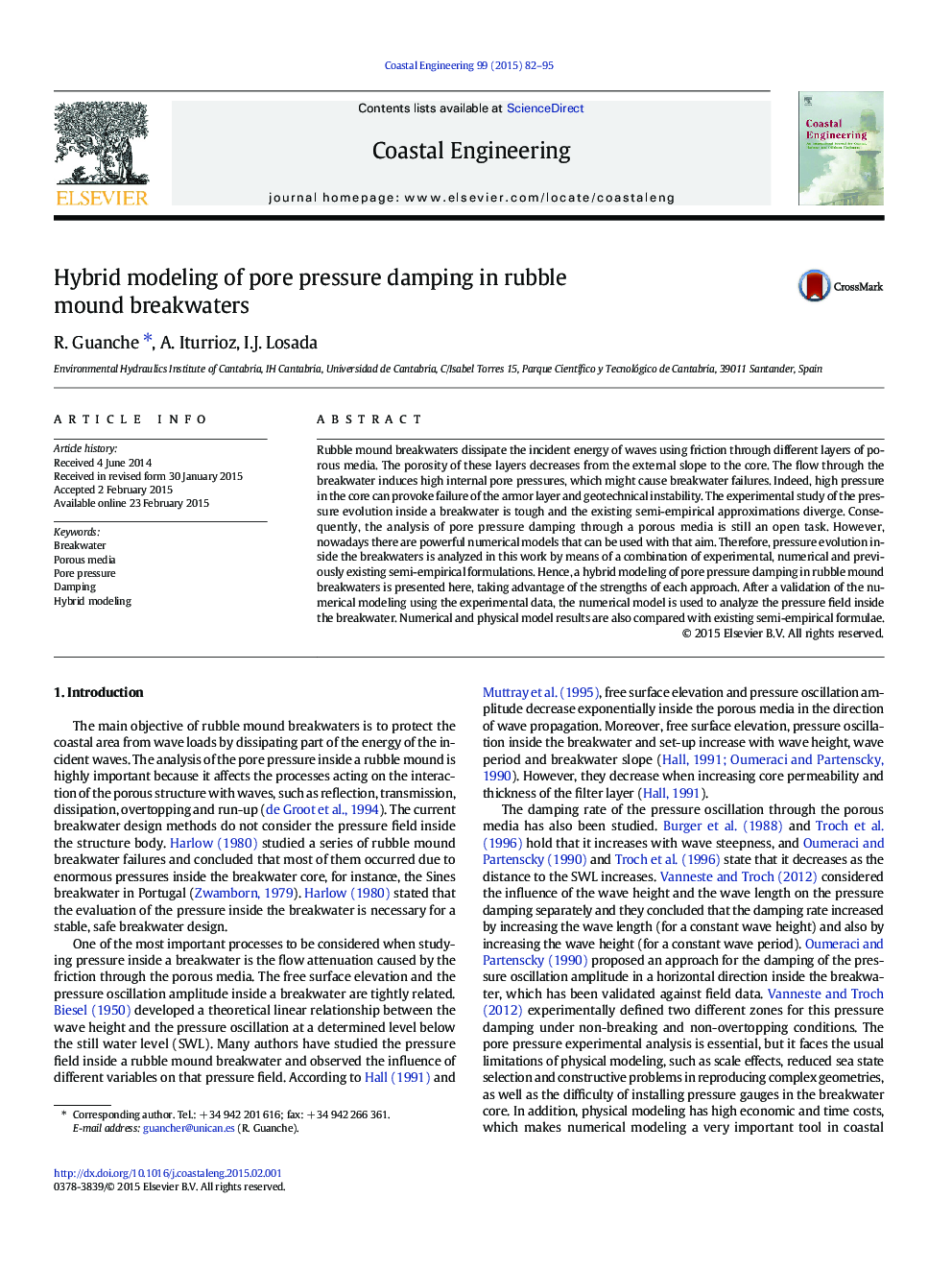| Article ID | Journal | Published Year | Pages | File Type |
|---|---|---|---|---|
| 1720664 | Coastal Engineering | 2015 | 14 Pages |
•Traditional breakwater design does not consider pore pressure in the core.•A hybrid modeling of pore pressure damping is presented.•CFD modeling results are experimentally validated.•Existing semi-empirical formulae are adapted based on the results.
Rubble mound breakwaters dissipate the incident energy of waves using friction through different layers of porous media. The porosity of these layers decreases from the external slope to the core. The flow through the breakwater induces high internal pore pressures, which might cause breakwater failures. Indeed, high pressure in the core can provoke failure of the armor layer and geotechnical instability. The experimental study of the pressure evolution inside a breakwater is tough and the existing semi-empirical approximations diverge. Consequently, the analysis of pore pressure damping through a porous media is still an open task. However, nowadays there are powerful numerical models that can be used with that aim. Therefore, pressure evolution inside the breakwaters is analyzed in this work by means of a combination of experimental, numerical and previously existing semi-empirical formulations. Hence, a hybrid modeling of pore pressure damping in rubble mound breakwaters is presented here, taking advantage of the strengths of each approach. After a validation of the numerical modeling using the experimental data, the numerical model is used to analyze the pressure field inside the breakwater. Numerical and physical model results are also compared with existing semi-empirical formulae.
